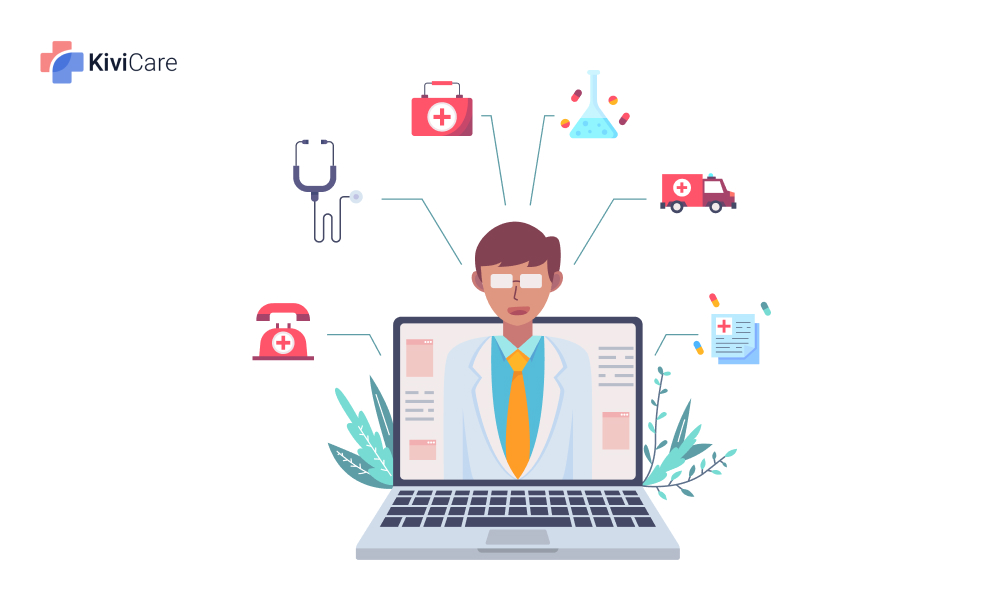
Streamlining Patient Care: Practice Management Software Tips!
Managing patients is a crucial aspect of healthcare practice, and it can be time-consuming and overwhelming without the right software. Patient management software offer an effective solution to streamline patient care, improve patient engagement, and enhance practice efficiency.
However, choosing the right software can be a daunting task, considering the various options available in the market. In this blog, we will guide you through the considerations and key features to consider when choosing the perfect patient management software for your healthcare practice.
Patient Management software: An Overview!
Patient management are software solutions designed to streamline various aspects of patient care and practice management aspects. These software typically include electronic health record (EHR) systems, appointment scheduling, and management, patient communication and engagement features, prescription and medication management, reporting and analytics, and billing and payment processing features. They aim to improve the quality of patient care, reduce administrative burdens, and increase the efficiency and productivity of healthcare practices.
Choosing the right patient management software is crucial for the success of a healthcare practice. A suitable software can help optimize your workflow, enhance patient engagement and satisfaction, and improve practice profitability. On the other hand, an unsuitable software can lead to inefficiencies, decreased patient satisfaction, and a waste of financial and time resources.
The correct patient management software will depend on various factors, such as the size and specialty of the practice, the unique needs and goals, and the budget and resources available. Therefore, assessing these factors carefully and evaluating the features and benefits of various patient management software before deciding is essential.
A well-chosen patient management software can help your healthcare practice provide better patient care, increase revenue, and achieve long-term success.
Considerations Before Choosing a Patient Management software
With so many available options, choosing the right patient management software can be challenging. It is essential to assess various factors to determine the best software that aligns with your practice’s goals and needs. Here are some critical considerations to make before choosing a patient management software:
- Understanding your practice needs and goals
Before selecting a patient management software, evaluate your practice’s unique needs and goals. This involves identifying the specific areas that need improvement, such as scheduling, billing, or patient engagement.
Assessing your needs and goals can help you select a tool that addresses your pain points, streamlines workflow, and improves practice efficiency.
- Identifying your budget and cost considerations
Another crucial factor to consider when choosing a patient management software is your budget and cost considerations. You should evaluate the costs of purchasing, implementing, and maintaining the software.
This includes licensing fees, training costs, and ongoing maintenance expenses. Consider selecting a software that provides value for money and aligns with your budget.
- Assessing the tool’s usability and ease of adoption
A patient management software should be easy to use and adopt to ensure successful implementation. It should have an intuitive interface and be easy to navigate, allowing your staff to learn and use the system efficiently.
Consider selecting a software that offers training and support to ensure that your staff can use it effectively.
- Evaluating the software security and compliance features
Security and compliance are critical considerations when selecting a patient management software. You should evaluate the software security measures, such as data encryption, access control, and backup and recovery features.
- Assessing the software interoperability and compatibility with other systems
It is essential to consider how the patient management software integrates with other systems you use, such as EHRs, billing systems, and telehealth platforms.
The software should have robust interoperability features that allow seamless data exchange, avoiding data silos and redundancies. This can help streamline your workflow and improve practice efficiency.
Key Features to Look for in a Patient Management software

When choosing a patient management software, it is important to evaluate the key features it offers. These features can help you improve patient care, streamline workflow, and enhance practice efficiency. Here are some key features to look for in a patient management software:
Electronic Health Record (EHR) capabilities
An EHR system is a crucial component of patient management software. It provides a centralized digital repository for patient data, enabling healthcare providers to access and manage patient information efficiently.
EHR capabilities include charting, clinical decision support, patient history tracking, and lab results management.
.
Appointment scheduling and management features
A patient management software should have robust appointment scheduling and management features. This includes automated appointment reminders, online scheduling, waitlist management, and patient self-scheduling.
These features can help reduce no-shows, improve patient satisfaction, and optimize appointment scheduling.
Patient communication and engagement features
Patient communication and engagement features are essential for effective patient management. The software should have features such as secure messaging, patient portals, telehealth capabilities, and patient education resources.
These features can help improve patient engagement, satisfaction, and overall health outcomes.
Prescription and medication management features
Medication management is critical to patient care. A patient management software should have features like e-prescribing, medication reconciliation, and medication reminders.
These features can help improve medication adherence, reduce medication errors, and improve patient outcomes.
Reporting and analytics capabilities
A patient management software should provide robust reporting and analytics capabilities. This includes customized reports, data visualization tools, and data analytics.
These features can help you track patient outcomes, identify areas for improvement, and optimize practice performance.
Billing and payment processing features
A patient management software should have features that streamline billing and payment processing. This includes insurance verification, electronic claims submission, payment processing, and financial reporting.
These features can help improve billing accuracy, reduce administrative burdens, and increase revenue.
KiviCare - Your Ticket to a Successful Medical Consulting Service
Are you ready to take your medical consulting service to the next level? Then you need KiviCare – clinic and patient management system in WordPress! With its sleek design and powerful features, KiviCare is the perfect software for showcasing your expertise and providing top-notch care to your patients.
In conclusion, a patient management software should offer robust features that address various aspects of patient care and practice management.
When choosing a software, consider its EHR capabilities, appointment scheduling, and management features, patient communication and engagement features, prescription and medication management features, reporting and analytics capabilities, and billing and payment processing features. Selecting a Complete clinic management solution software with these key features can help you improve patient care, streamline workflow, and enhance practice efficiency.
Whether you specialize in Oncology, Neurology, or any other niche specialty, KiviCare has you covered with exclusive home pages designed just for you. And with WooCommerce compatibility, you can even turn your site into a profitable eCommerce venture.
But what really makes KiviCare stand out is its ease of use. The Elementor Page Builder and Slider Revolution Responsive WordPress plugins make site development a breeze, while the KiviCare Plugin ensures seamless integration with WooCommerce and patient management systems. And with the Telemed and WooCommerce Payment Gateway add-ons and a Clinic & Patient Management System EHR, you can rest assured that your patient’s data is secure and easily accessible from anywhere.
So if you’re looking for a one-stop solution for medical and healthcare management, look no further than KiviCare.